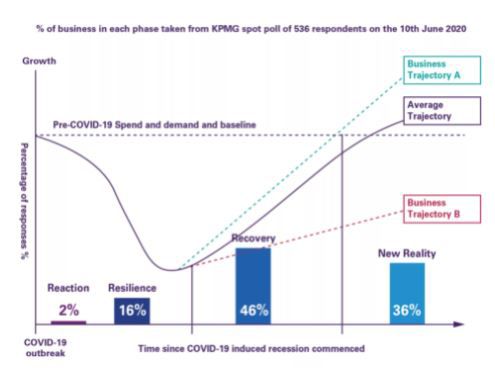As businesses try to understand the customer landscape during this pandemic, one thing is clear; digital services will continue to grow and the associated data will increase exponentially. Already we are seeing an increased expectation and demand on insights being shared at the boardroom to make valuable contributions to the conversation as cost pressures start to kick-in.
This data will soon become a burden to certain companies or a goldmine for others. Businesses that are able to effectively manage and exploit their data will succeed moving forward into the New Reality.
In the early stages of COVID-19, companies had to quickly adapt their business models to meet the needs of their customers. Ladurée established an ecommerce channel after closing all their stores, Tesco more than doubled its online delivery slots to 1.2 million in six weeks and Facebook have now launched Shops; an accelerator tool to help businesses quickly establish an online presence. Data that is being produced from these channels are the only reliable assets that these businesses can use to make informed, data driven decisions.
Companies that were already pre-disposed to managing their datasets successfully have monopolised the business landscape in the last decade. Considering five of the top six global companies are data technology businesses, it wouldn’t come as a surprise that companies which are able to extract value from data will most likely follow the trajectory of type ‘A’ businesses.

Type A businesses rely on a working assumption that ‘things will never be the same again’. Type As will use this crisis as a means of reconvening and reinventing their business to accelerate transformation programmes and embrace new ways of working permanently. Everything will be on the table.
Type B businesses will rely on a working assumption that ‘the world will revert to where it was’ and this will shape and define the mental model of the leadership team
Managing and exploiting these datasets could be the difference between a business surviving in the New Reality or not being able to compete, attract and retain the New Customer. One way to effectively manage large datasets and identify insights is to establish a data Centre of Excellence.
A Data Centre of Excellence is the business’ engine room for all things data. The Centre of Excellence is in charge of the data transformation process for the whole business. It ensures that the data being captured through multiple channels is cleansed, transformed and combined so that a common view of the organisations’ data (single source of truth) is ready to be consumed by specialists in different business areas such as HR, Finance, Marketing. The specialist in these business areas will have the expertise to spot trends, identify insights and make data driven decisions. Due to the single view of the data; insights and trends identified by different teams can be easily shared, replicated and implemented across the organisation.
Furthermore, a Data Centre of Excellence can be used to establish a continuous insight delivery service which provides a live update on the business’ performance, including indicators to monitor sales, demand and customer behaviours. These indicators can provide insights on how the business should adapt during and post-COVID-19.
Establishing a Data Centre of Excellence is difficult, complex and hard to sell across the organisation as buy-in is required from each core function to reap the most benefits. Taking a customer centric approach can make the journey easier. In addition, being able to communicate the clear benefits that come from a clean and simple view of the data will help sell this vision. Key things to consider when establishing a Data Centre of Excellence are:
- Think big, start small: Data touches every part of the business, this does not mean you can solve all data related issues within a business overnight. Identify common data pain points across the business and focus your effort solving issues so that many people within your organisation can reap the benefits. This will help to break down silos between functions.
- Develop a plan: When undertaking any data related activities, take an agile approach, where outputs are delivered at pace, it’s key to show the business that you can deliver and help them with their data needs.
- Culture is key: Ensuring the team has the right tools to complete the job is vital, but establishing the right culture is even more important. Buy-in and support from senior leadership team as well as brining along key stakeholders through this journey will not only promote the work that you have done but build momentum.
- Stop talking and start doing: The hardest part of any new initiative is to start the activity. Realise that you will not get it 100% correct on your first attempt; do not let perfect be the enemy of the good. By initiating the activity and starting to deliver benefits to the business will increase the businesses’ confidence in your team.
- Bring people along for the ride: People who have been working with data will be your first advocates, but you should also include those stakeholders who are not ‘as’ convinced of the value data can bring to an organisation. Changing their minds and solving their key data pain points will help bring them on your side.
- It is a continuous journey: The New Customer will evolve over time. Therefore, it’s important to continually monitor and analyse changes in customer’s behaviours, preference and expectations and provide the business ways to adapt and improve their customers’ experience.

